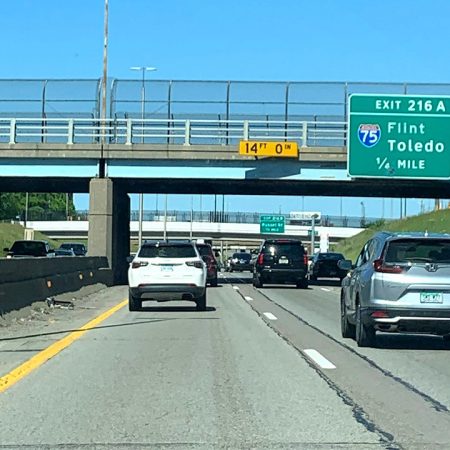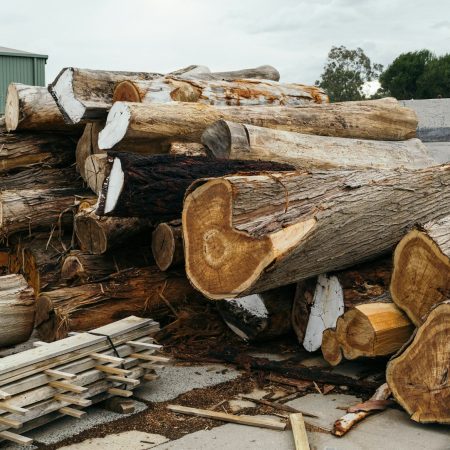Civil Engineers say Michigan storm water system is drowning in aged infrastructure
One of the few issues that often bridges the political divide is concern over the condition of the nation’s roads, rails and other infrastructure.
Those worries extend to the American Society of Civil Engineers (ASCE), which grades U.S. infrastructure every four years.
The group’s most recent report card gives the nation a mediocre “C.” It rates Michigan’s infrastructure as being slightly worse than that.
But ASCE’s chair of the infrastructure report card project, Darren Olson, told WDET both Michigan and the country as a whole have improved in at least one area.
Listen: Darren Olson on why ASCE gave US infrastructure a ‘C’ grade
This interview has been edited for clarity and length.
Darren Olson, ASCE: Our highest grade was for ports. They received a “B.” They were initially very much impacted by the pandemic. We can remember those situations where all the goods were bottled up at ports. Then they had a lot of private and public sector investment into the ports. And after that initial shock to the system, we saw a lot of improvement in the ability for our ports to take in and move goods at a level right now that is really helping our national economy.
As a state, Michigan received a “C-.“ Just a little bit below the national average. Roads in Michigan have always been a very hot button topic. But there has been some recent investments in that area as well, the Rebuilding Michigan Program, the Building Michigan Together plan. So there has been some investment set to help the roads, although that is still in the “D” range. One of the other ones that we see, which is consistent with ratings nationally, is the storm water grade. Michigan’s storm water grade is a “D.” Part of it is because Mother Nature is throwing at us storm events that most of our infrastructure isn’t designed for. I think a year or two ago, the Detroit airport flooded severely because four or five inches of rain came down pretty quickly.
Our storm water infrastructure just isn’t designed to handle some of these increasingly severe rainfall events. That’s one of the huge recommendations of our report card, to make our infrastructure more resilient. We don’t want to design our infrastructure for what we might expect today, let’s design it for what we’ll be expecting in 20, 30, 40 years from now. Infrastructure investment is such a long game that it really makes sense to design and build it accordingly.
Quinn Klinefelter, WDET News: You gave Michigan’s road infrastructure a “D” grade. Michigan Gov. Gretchen Whitmer ran on the slogan, “Just fix the damn roads.” So from what you’re finding, the roads are not exactly getting fixed the way one would hope?
DO: There’s certainly progress being made. But what we see a lot of times, and what people maybe don’t understand so much about infrastructure, is that these projects take a long time. Nationally, the Infrastructure Investment and Jobs Act came out in 2021. And Michigan has had some pretty strong funding mechanisms for large scale infrastructure planning. But infrastructure takes a long time to go from planning to design and permitting to the construction process. So there is progress being made in Michigan on the roads. Unfortunately, after we’ve been underinvesting for decades, it’s going to take time, both in Michigan and nationally, to turn this around and bring them a grade they’re all proud of.
QK: Some of these projects require federal funding. The Trump administration has frozen or withdrawn funds for a variety of items. Is that affecting efforts to improve the nation’s infrastructure or, in your view, might it be likely to impact it in the future?
DO: Well, I can’t really comment on whether some of the funding will come to fruition or not. But what I can say is we have seen an improvement in our nation’s infrastructure over the past four years because of federal investment. We are urging our lawmakers to continue that level of investment. We’ve come from a “C-“ to a “C” nationally. It’s going to take us a long time to get to a level where we can give a grade that we’re all proud of. But a key to get there, after decades of underinvesting, is to continue to invest like we are now and increase funding where necessary. We’ve got a state and local and private sector role to play in this as well. And I think when we bring all of those stakeholders together to help fund our infrastructure, there is improvement.
QK: Beyond roads and bridges and the like, your group also examined the infrastructure surrounding school facilities. How are the schools faring there?
DO: Schools are a very tough infrastructure category to analyze because so much of that is funded at the local level. Sometimes there’s just not a whole lot of data on what the status is of that funding and what the needs are of the schools. Unfortunately, it’s kind of ironic that schools which issue grades also got one of our lowest grades, a “D+.” That’s something that we would hope can get turned around in the next four years.
QK: When you say “D+” does that mean there’s poor investment in school buildings themselves or the heating, air, cooling units, or all of the above?
DO: All the infrastructure associated with schools as a category gets a “D.” That really means that it’s in poor condition and at risk. In fact, poor infrastructure overall is costing American families $2,700 a year. That’s money that we spend because of extra time and traffic congestion, which I’m sure Michigan is familiar with. When we have to buy bottled water because of a water main break or maybe have to throw out all of our groceries in the refrigerator because the power goes out. If we just invest like we are now, we will be saving American families $700 of that every year. That’s money they can put back into buying goods and services. Manufacturing, which is something that Michigan really relies on for employment, becomes much more efficient when we have good infrastructure. Manufacturing needs water, it needs roads, it needs ports. When we invest in those we see improvements in the infrastructure and we see our economy working more efficiently.
Trusted, accurate, up-to-date.
WDET strives to make our journalism accessible to everyone. As a public media institution, we maintain our journalistic integrity through independent support from readers like you. If you value WDET as your source of news, music and conversation, please make a gift today.
The post Civil Engineers say Michigan storm water system is drowning in aged infrastructure appeared first on WDET 101.9 FM.








